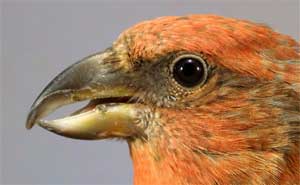
CROSSBILL CROSSES
The Crossbill is relatively new to hybridising although birds have been bred occasionally in the past, over the last few years we have seen lots of Crossbill mules and hybrids on the show bench and it seems to have been crossed now with most of the common finches although it must be said that it seems doubtful that we will ever see a cross between the Siskin or Redpoll because of the size difference but who knows what we will see, I suppose the larger northern Redpoll with the smaller races of Crossbill may be possible
3-4 eggs, sometimes 5, for about 12-14 days .Young leave nest about 17 days after hatching and are self supporting aprox. 2 weeks later.
BREEDING PAGES CLICK HERE
The mandibles may cross either to the left or the right
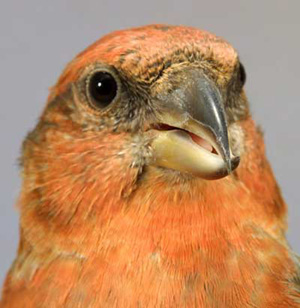
Status and distribution The most widespread and numerous of the crossbills in the Western Palearctic found discontinuously over much of the Region. Breeds in parts of Britain (especially southern Scotland and eastern & southern England) eastern France and the Alps east across Europe to the Urals including much of non-Arctic Scandinavia. In the south breeds over much of Spain and the Pyrenees, Balearics, Corsica and Sardinia, Apennines and southern Italy, the Balkans south to northern Greece, parts of western, central & northern Turkey, Cyprus and the Caucasus. Also breeds in a limited area of North Africa from eastern Morocco to north-east Algeria and adjacent Tunisia and has bred in Israel. Many breeding populations are highly fluctuating and new areas are often colonised for a few years after an irruption but main range has expanded slowly southwards in the 20th century.
Some birds are rather sedentary, others are partial migrants leaving breeding areas Jun-Aug, but many are nomadic during the winter. Northern birds fairly regularly irrupt southwards sometimes beyond range of southern breeders and remain to breed for a few years.
Vagrants recorded in Iceland and Faroes, Madeira, Canary Is and Gibraltar, Libya, Lebanon and Syria.
Subspecies Six races occur in the Region differing mainly in bill-size and depth of colour of males. Nominate race occurs over much of Europe inc The Scottish crossbill (Loxia scotica) which is so similar to the common and parrot crossbill (Loxia pytyopsittacus) All three species are identical in plumage, and the Scottish crossbill is intermediate in physical size between the smaller common crossbill and the larger parrot crossbill. While further studies to clarify its taxonomic status are being carried out, the Scottish crossbill is treated by scientists as a distinct species, with paler balearica on Balearics, duller and greyer corsicana on Corsica and poliogyna in North-West Africa with orange rather than red males and greyer females. All three of these races and guillemardi from Cyprus, are similar to poliogyna, have larger bills than nominate. Crimean race mariae is brighter red in male and paler and greyer in female than nominate other types of crossbill are White-winged crossbill Loxia leucoptera and the red crossbill. The Red Crossbill is similar to the White-winged Crossbill but lacks wing bars and has a larger bill.
Habitat Coniferous forest, usually Scots Pine, also larch and spruce and sometimes in alder and birch. Mainly within forest but during irruptions often occurs in more open woodland and town parks. Frequently seen drinking from puddles and pools on forest floor.
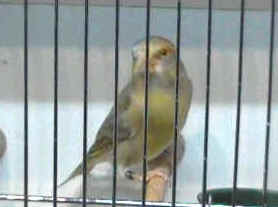
CROSSBILL X GREENFINCH ( M.J.J Mayer Zetphen)
This cross looks better when colour fed has been bred in many different colours very nice chunky bird shows both parents well
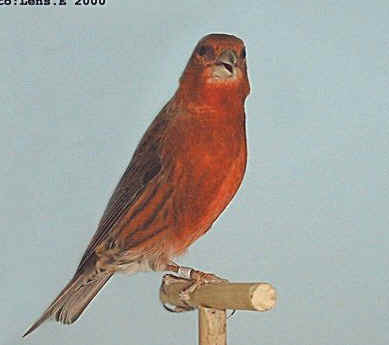
CROSSBILL X CANARY
This cross also needs to be colour fed best when crossed with the Norwich canary
This cross was shown at the 2002 world show in Belgium It had the colouration of a goldfinch mule with the shape, beak, rump colour and wings of the crossbill, It was not so thick set as the crossbill. but shows both parents equally
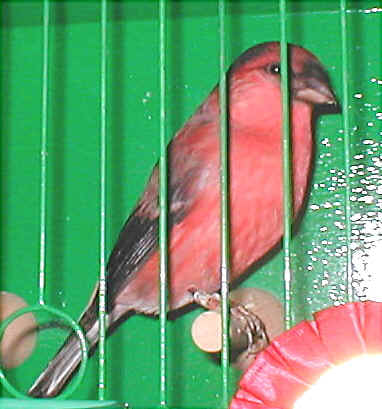
I took these photos at Yorkshire BB & HC show 2002 this bird was shown thereby Wendy Woodward, it was the first time this cross has ever been on the show bench in Britain. The hen (below right) was Photographed at Staffordshire B.B & M.C 2003 by G Cheeseman
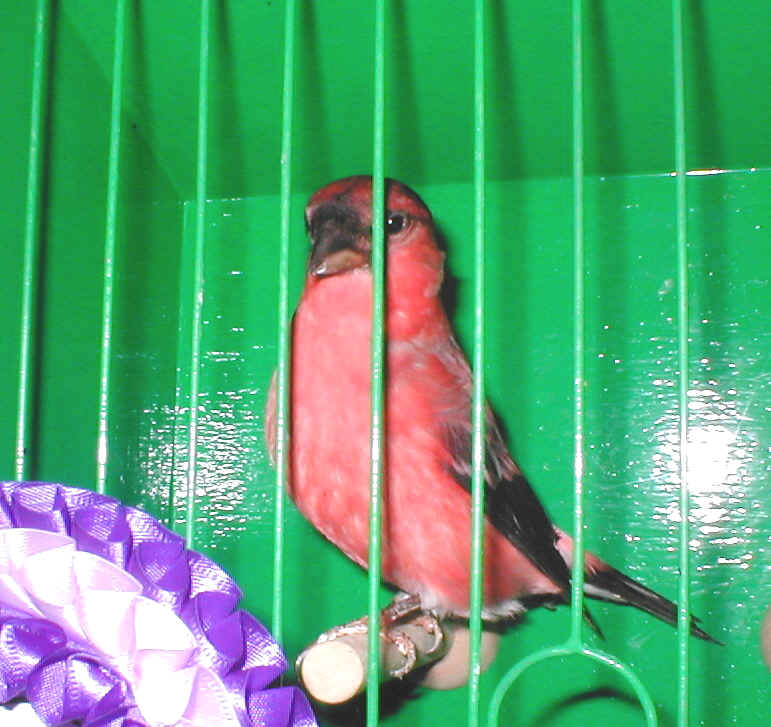
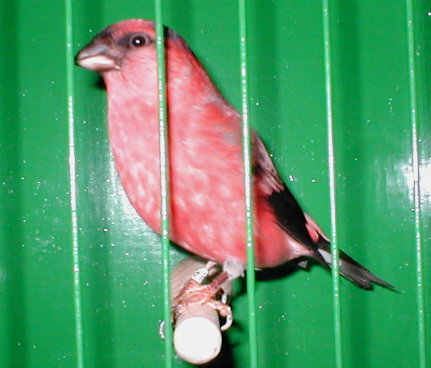
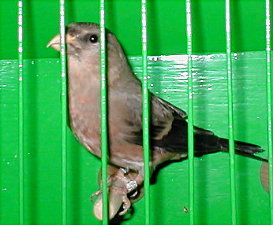
Unflighted Buff Hen Hybrid Bred in the U K by Dale Bowen Photo's taken at the English National 2002
CROSSBILL FEEDING TECHNIQUES
SEED: good British finch mix, including a very small amount of stripped sunflower, pine nuts maw and perilla also a good multi vitamin with added probiotic.
REARING: soaked seed, egg food, plentiful supply of green food and small amounts of mealworms, fresh water daily and mineralised grit with a small amount of charcoal added.